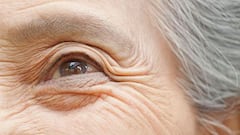Covid-19 Not Just Lung Disease, Can Also Cause Dangerous Blood Clots: Experts
Global studies have shown that the prevalence of blood clot formation known as deep vein thrombosis (DVT) in hospitalised Covid-19 patients is 14-28 per cent

Covid 19: There is increasing evidence to suggest that COVID-19 is not just a disease of the lungs as initially thought but can also cause dangerous blood clots which need to be immediately removed to save limbs in some cases, say experts.
Global studies have shown that the prevalence of blood clot formation known as deep vein thrombosis (DVT) in hospitalised COVID-19 patients is 14-28 per cent and is a lower 2-5 per cent for arterial thrombosis.
The Indian experience is similar, said experts, stressing that the infection is about the blood vessels as much as about the lungs.
We are dealing with five-six such cases per week on average. This week it has been one day of such complications, said Dr Ambarish Satwik, a vascular and endovascular surgeon at Delhi's Sir Ganga Ram Hospital.
The prevalence of blood clot formation in COVID-19 is high in patients who have conditions such as type-2 Diabetes Mellitus, although the exact incidence remains unknown, added Dr Amrish Kumar, consultant, cardio-thoracic vascular department, Aakash Healthcare in southwest Delhi's Dwarka locality.
While DVT is a serious condition that occurs when a blood clot forms in a vein located deep inside the body, arterial thrombosis is a clot that develops in an artery. Arteries are blood vessels that carry oxygen-rich blood away from the heart to the body, while veins carry blood low in oxygen from the body back to the heart.
Satwik drew attention to the Covid-clot connection in a tweet earlier this week in which he posted a picture of a blood clot cast taken out from the lower limb arteries of a COVID-19 patient.
What Covid clots look like. Covid produces blood clots. The incidence of heart attack, stroke, or limb loss due to an arterial clot in Covid varies from 2 per cent-5 per cent. We pried these out of the lower limb arteries of a Covid patient. We were able to save the limb, Mr Satwik said on May 5.
Explaining his tweet, which attracted a lot of attention and questions too, Mr Satwik said the COVID-19 patient had an acute circulatory cut off because of the clots, and the limb was threatened.
So we had to physically do a surgical procedure and extract these clots, otherwise, there would have been gangrene, and he would have ended up with an amputation. We were successfully able to take the clots out and save the limb, the surgeon explained.
Authors of a Lancet paper published in November last year said studies suggested there is an increased association between COVID-19 and the risk of thromboembolism (TE) or obstruction of a blood vessel by a blood clot.
The authors of the paper concluded that TE rates of COVID-19 are high and associated with a higher risk of death.
We have been understanding the pathophysiology of COVID-19 for over a year now. When it first hit China and the global west, it was thought that it was typical viral pneumonia. Severe cases of acute COVID-19 were being labelled as similar to the acute respiratory distress syndrome (ARDS), which leads to respiratory failure, Satwik noted.
However, a series of autopsies on COVID-19 patients and their lungs revealed that what the doctors were seeing was not typical ARDS.
...in addition to that, they were finding clots in the microcirculation of the lungs. So it was then kind of understood that COVID is as much a disease of blood vessels as much it's a disease of the lungs, Satwik added.
In a COVID-19 patient, when blood vessels are injured, they produce a protein that attracts platelets and other clotting factors that come together to form a clot, Mr Kumar added.
Studies have shown that around 20 to 30 per cent of hospitalised COVID-19 patients have developed this complication, he told PTI.
Because blood vessels are everywhere on the body, these clots could form anywhere, Satwik said. Some of these clots occupy big blood vessels and become macroscopic blood clots.
But otherwise we are seeing diffused microscopic clots in microcirculation in various organs, he noted.
According to a University of Oxford study published in April, the risk of rare blood clotting following COVID-19 is around 100 times greater than normal.
The research found that the rare blood clotting known as cerebral venous thrombosis (CVT) -- a blood clot of a cerebral vein in the brain -- is more common after COVID-19 than in any of the comparison groups, with 30 per cent of these cases occurring in the under 30s.
The study covered 500,000 COVID-19 patients. The risk would be 39 in a million, according to its finding.
The signals that COVID-19 is linked to CVT, as well as portal vein thrombosis a clotting disorder of the liver is clear, and one we should take note of, said Oxford's Maxime Taquet, one of the authors of the study.
Explaining how the virus causes blood clots in COVID-19 patients, Satwik said the virus is known to attach itself to the inner lining of the lung, and right next to these air sacs are very thin blood vessels or capillaries.
The virus invades these blood vessels and starts affecting the inner lining of these blood vessels which produces a dysfunction within the blood vessels which produces these clots, the surgeon said.
As a result, he said, some clinicians were using blood thinners as part of the treatment and getting success.
What we have understood is these micro clots need immediate retrieval in order to save the limbs, Satwik added.
He also said it is very difficult to know the prevalence of clots in the entire population infected with COVID-19.
Although it is difficult to determine the vulnerability of COVID-19, individuals with existing cardiovascular morbidities are the ones who will suffer thrombotic complications, Satwik said.
According to Kumar, in COVID-19 patients, the clots seem to form in the tiny vessels of the lungs rather than the major vessels, adding that clots in the lungs usually happen in the case of typical strokes or heart attacks or deep vein thrombosis.
Risk of COVID-19 patients associated with blood clots are stroke (clot in the cerebral artery), clots in the lungs, heart attack, deep vein thrombosis, and thrombosis in both upper and lower limb arteries. Stroke can cause paralysis, but we have not seen any such so far in our hospital, Mr Kumar added.
Check out below Health Tools-
Calculate Your Body Mass Index ( BMI )
Top Headlines
Trending News







































